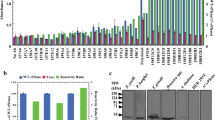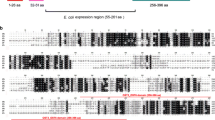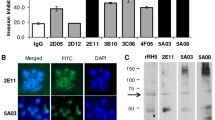Abstract
On the basis of immunological cross-reactivity, we identified a 43-kDa Plasmodium berghei antigen with homology to the exp-1 antigen from P. falciparium. The P. berghei antigen was recognized by an antibody directed against an epitope on the C-terminus of the P. falciparum exp-1 protein. This antigen is localized on the surface of the parasite and shares peptide sequence homology with the P. chabudi antigen Ag3008. To investigate further the role of the P. berghei antigen, we designed antisense phosphorothioate oligodeoxynucleotides (PS oligos) complementary to sequences of the exp-1 mRNA from P. falciparum. The PS oligos were capable of inhibiting the development of P. falciparum in vitro by 47%. In vivo, experiments in mice showed that the same PS oligos had the potential to extend the life span of mice infected with P. berghei by a factor of 2–4. The immunological cross-reactivity and the antisense inhibition of P. berghei parasite development in vivo indicate that this antigen may be a homologue of exp-1 from P. falciparum that has functional importance for parasite survival.
Similar content being viewed by others
Author information
Authors and Affiliations
Additional information
Received: 3 April 1995 / Accepted: 16 June 1995
Rights and permissions
About this article
Cite this article
Tan, T., Goh, K., Binh, L. et al. Identification of a Plasmodium berghei antigen sharing common features with P. falciparum and P. chabaudi parasitophorous-vacuole membrane antigens. Parasitol Res 82, 130–135 (1996). https://doi.org/10.1007/s004360050083
Issue Date:
DOI: https://doi.org/10.1007/s004360050083




